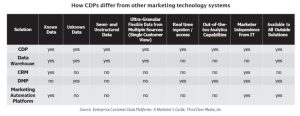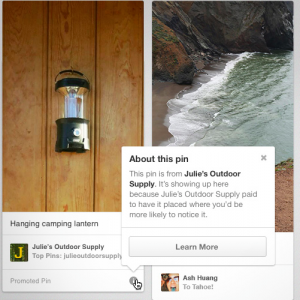— June 13, 2019

Account Based Marketing is a go-to-market strategy that coordinates personalized marketing and sales efforts to land and expand target accounts. An array of technology solutions now empower companies to use this methodology to increase reveue. These include customer relationship management, marketing automation, web analytics, and advertising technology, predictive tools, etc. Also essential are tools for web analytics, progressive profiling, content delivery, social media management and more. Even more recently, we’ve seen the rise of ABM platforms.
As we climb through this technology stack, it’s easy to lose sight of the key to success — to connect human-to-human and develop long-term, win-win relationships that foster business growth. Technology is simply a stepping stone that enables a company to relate to prospects and customers in an insightful, personal way.
Find the balance of technology and the human touch and you will strike gold.
The Role of Technology
That said, it does not diminish the essential role of technology. Without it, due to the immensity of the task, B2B marketers would fall back on blanketing their target audience with one-size-fits-all messaging. Unfortunately, one size fits some better than others. Technology enables them to drive results by delivering personal messages at scale. And today, because your competitors are likely personalizing their communications if you’re not doing the same, you’re falling behind. Customers now expect emails, websites and phone conversations to cater to their needs.
How to Build Human Relationships
1 – Create Your Ideal Account Profiles
To build human relationships, you start with the big picture and then drive down to people you want to reach. Define your ideal account profile, including specifics such as industries, number of employees, location and anything else that is a predictor for your company’s sales achievement.
Here are some factors to consider when defining your ICP:
- What sector or sectors are you winning in?
- Are there ‘look-alike’ segments similar to those you have success with now?
- Alternately, what new markets are most important for your company to develop?
- Are these markets growing?
- What accounts will deliver the most value (including strategic value, advocates, referral sources, geographic presence)?
The output of your ICP should be a document that clearly represents the type of companies you are targeting in your ABM efforts. The most important part is this is clearly articulated to everyone and in a place that is easily accessible for quick reference.
2 – Learn About Targeted Industries
Once you decide on the industries you wish to target, learn as much as possible about the trends, growth drivers, competitors and challenges. This information helps inform how you communicate with them.
Generating insight isn’t enough. Insight isn’t anything if itn’s not followed up with action. Get the knowledge into the right hands and get busy. Here are some insight-sharing tips:
- Create an ABM Insight Machine with a dedicated team of researchers. One company we work with has a four-person team that creates Value Hypothesis documents for each of their 1,400 target accounts, including: What they think the account should be worried about; Examples of similar companies that they’ve helped; Content they’ve researched about them (e.g. quotes from their CEO); Entrypoints–contentor messages that can be sent directly to start dialogsThese are customized by account but can be based on segment-specific templates.
- Spin up an Insight Base using a web collaboration tool or intranet.
- Issue regular update reports highlighting new insights or developments
- And ad hoc alerts for breaking news that can be acted on.
- Integrate insight into your CRM profiles or your ABM platform.
– Brandon Redlinger, Director of Growth, Engagio
3 – Define the Landscape at Each Target Account
Next, develop a profile of each account because they are not monolithic organizations. Instead, they represent networks of decision-makers. You need to identify the individuals and determine the concerns and questions they may have during each phase of the buying cycle. Understanding their decision-making process enables you to approach them in an intelligent, relevant way.
Create these individual account profiles using web research, LinkedIn, sales intelligence platforms previously mentioned, and engagement data using a platform. After you’ve completed this secondary research, you will likely still have some knowledge gaps. Fill them in by talking via phone with decision-makers, influencers and gatekeepers at your target organizations.
During phone calls, establish rapport quickly by painting a picture of how your company can provide help. By providing value, you can open doors and gain clarity on how the organization functions. Your goal is to learn who is on the buying team, their titles, roles in the buying decision and contact information. At the same time, learn as much as possible about their issues and any upcoming or recent changes, such as acquisitions or high-level personnel moves, which may trigger buying decisions.
4 – Orchestrate Your Outreach to the Buying Team
With this information under your belt, you can orchestrate personalized human and automated account-based tactics through multiple channels. Your game plan should include well-coordinated plays from both marketing and sales to all those who contribute to the buying decision. The trick is going to be balancing automation with human efforts – automate where you can, do it manually where you should.
Marketing might start with online ads to build awareness and then follow up with a highly segmented, personal email. They should be prepared to offer webinars, white papers and case studies that help solve problems. Business development reps can follow with customized emails and phone calls. Since you won’t reach everyone you call, make sure you leave voicemails. They have proven to increase response rates when they refer back to emails. Include a call to action, such as a request to set up a demo.
For best effect, you can stagger your outreach to the various contacts within an account. You don’t want to overwhelm anyone by providing too much information all at once. The drip, drip, drip nurturing approach popularized by inbound marketers, also applies in ABM.
Conclusion
Using this highly personalized process, you go beneath the surface to understand the internal dynamics within a target account. Plus, you uncover the texture of their problems from multiple team members’ perspectives. Technological advances can take you a long way, but to gain the level of insight you require, you’ll need two-way conversations. In them, your reps should listen, learn and share ideas. At the same time, they build trust, which is essential for B2B sales.
Those who derive the most out of Account Based Marketing and Sales recognize that human relationships drive success — people respond to people. It’s about understanding people and offering value. The purpose of the finely choreographed digital communications is ultimately to connect people, provide value and solve problems.
Business & Finance Articles on Business 2 Community
(60)
Report Post






